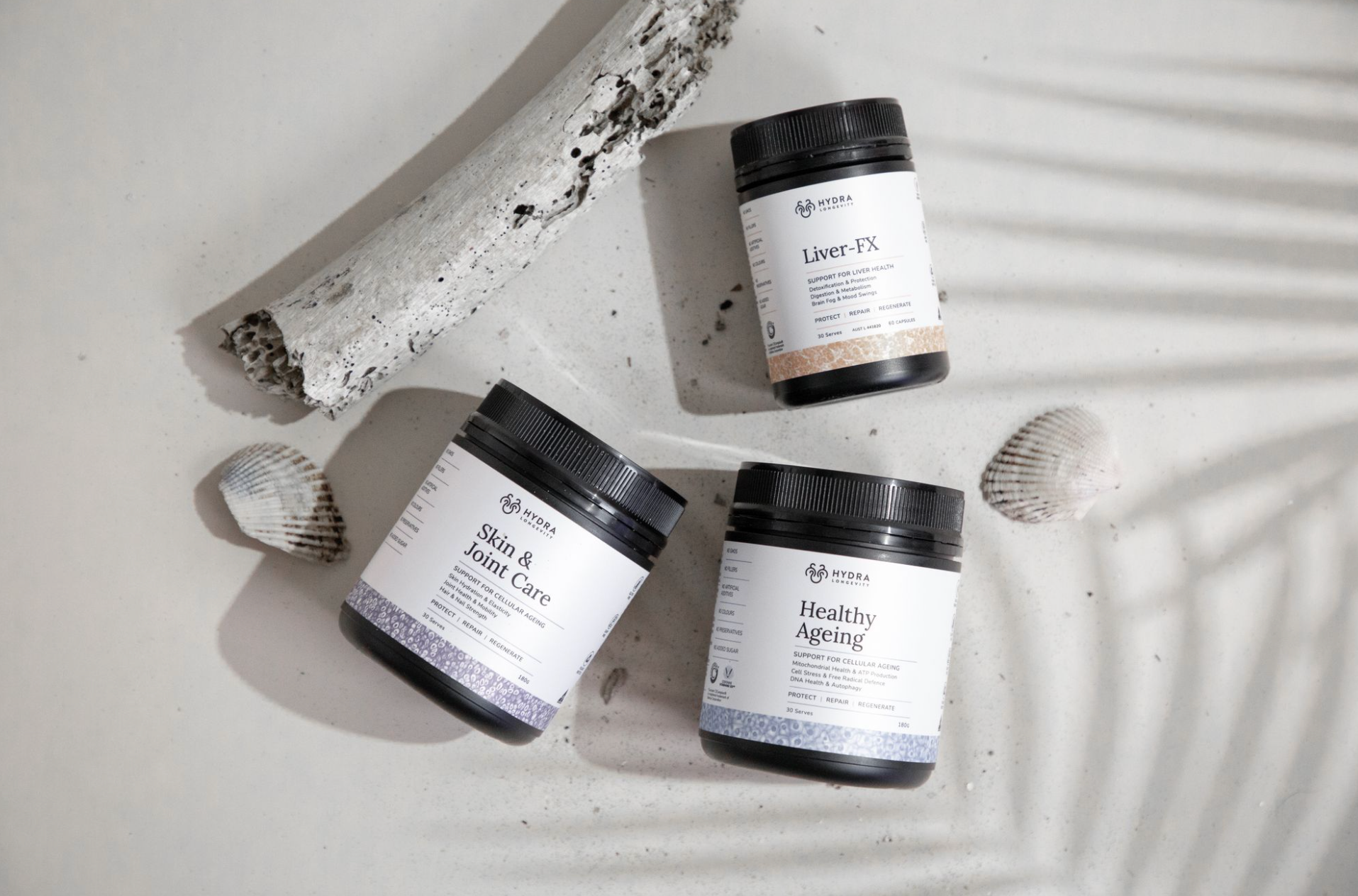Take a flash back to our blog topic in October 2019 - WHY DO WE AGE AND CAN WE AVOID IT? - we started talking about the molecular and cellular processes that govern ageing and the scientific discoveries and understandings related to the ageing body. A concise framework was needed to help scientists explain and target their research on the differences between chronological ageing and biological ageing.
In 2013 a group of scientists, headed by Carlos López-Otin, were given the task of reviewing all literature, theories and scientific research on ageing and they developed the 9 Hallmarks of Ageing.
This list encompassed all our current understandings of what characterises ageing and represented the common denominators in various ageing models of mammals. Their landmark paper finally brought together all the prevalent theories of the day about why we age and the mechanisms of how we age.
The nine hallmarks are as follows:
- Genomic Instability - unstable genes caused by DNA damage.
- Telomere Attrition - loss of telomeres (telomere shortening) which are the protective caps on the ends of our chromosomes.
- Epigenetic Alterations - alterations in our cellular epigenetics that control which genes are turned on and off.
- Loss of Proteostasis - where gene signalling proteins become less functional.
- Deregulated Nutrient Sensing - problems with nutrient sensing and usage by the cell caused by imbalanced metabolism.
- Mitochondrial Dysfunction - when the body's energy production machinery malfunctions.
- Cellular Senescence - with the accumulation of senescent zombie-like cells that inflame healthy cells
- Stem Cell Exhaustion - the decline in ability to replenish damaged tissue.
- Altered Intercellular Communication - inefficient cell communications and signalling.
Most researchers have now agreed that if we address these hallmarks, then we can slow down ageing. If we can slow down ageing, then we can stave off disease. Stave off disease, and you can push back death.
As we look deeper into these hallmarks, we see that they are not always independent, and the occurrence of one hallmark can, and often does, impact others. For instance, changes in the epigenetic regulation of genes (#3) can result in downstream effects on cellular function (#6), protein stability (#4), and cell signalling (#9).
For this reason scientists have categorised the hallmarks into three groups:
Group 1: ‘primary hallmarks’ - which are the foundational causes of cellular ageing.
Group 2: ‘antagonistic, response or compensatory hallmarks’ - which are a result of the primary hallmarks.
Group 3: ‘integrative hallmarks’ - that incorporate the first 2 groups and ultimately lead to the functional decline we see in ageing.

There is an important reason why ‘genomic instability’ takes the number one position on the list of hallmarks. It is often called the big boss of the 4 primary hallmarks. Ultimately, genomic instability influences every single parameter, process and outcome of all the other hallmarks. The blueprint (or code) printed in our genome is the information for all life and is the starting point of everything that makes us human.
As our cells age, their chromosomes become less stable and accelerated damage occurs. We have also developed a complex network of DNA repair mechanisms, but as these repair mechanisms fail to correct and repair this DNA damage, mutations accumulate and that leads to ageing and disease progression, especially cancer. If we cannot repair our DNA then our cells become sluggish, ineffective and cannot replicate correctly. It all becomes a bit of an internal cellular mess and even a single damaged gene can spell disaster.
Genes contain the biological blueprint for everything our cells need to produce so that our body can develop and function normally. This constant production and flow of proteins and other materials by our DNA are vital to cell operations and survival.
Our human genome contains 3 billion (that’s 3,000,000,000) base pairs of DNA that need protecting
Scientists have calculated that DNA damage can occur at a rate of many hundreds of thousands of molecular breaks per cell per day. Even though this is only a small fraction of the total amount of DNA, unrepaired breaks can accumulate with age and lead to increased incidences of disease and accelerated ageing.
Our cells have two areas it stores our DNA – the nucleus and the mitochondria. The nucleus is like a microscopic bomb shelter providing incredible protect for our genes. The other place genes are stored is the mitochondria. These genes help the engine, or powerhouse, of the cell to produce the proteins our cell requires to produce ATP, but unfortunately the mitochondria is not so good at providing protection to our DNA and much of the damage we experience occurs here.
Each day our DNA is constantly bombarded by damaging external factors such as UV rays from the sun and many of our indoor lights, radiation from scans, x rays and the technology we use, and toxic chemicals including air pollutants and smoking.
We’re also bombarded by internal factors such as reactive oxygen and nitrogen species (ROS/NOS). These are an undesired side effect of normal cellular functions like energy production. So even if we avoided all external threats to our DNA, we would still damage ourselves.
The DNA in most of our cells gets broken and deformed thousands of times a day. The good news is that we have an elaborate arsenal of repair systems which successfully take care of 99.9% of these damages. These repairs however, are not perfect, so the leftover damage accumulates with time. An unrepaired defect is not a big deal unless it happens at a critical place in the DNA and causes a broken gene or occurs to a critical cell like a stem cell.
Such damages may then lead to cancer, loss of function, or production of broken proteins which may inflict further damage to the body and make us age at a faster rate. Over time the accumulation of such damages eventually leads to critical system failures such as disease or even death.

So what can you do about it?
As we have learnt from the information above, despite the various repair systems that we have built into our genome, our bodies are constantly being assaulted from exposure to environmental stressors and even damaged through their own metabolic processes. On top of this, our repair systems also decline in effectiveness over time, meaning that DNA damage and mutations are inevitable just because we are alive.
More and more evidence is being uncovered about how we can combat this process on a daily basis. Researchers are now focussing their efforts on drugs and therapies that can prevent and repair DNA damage. Human trials are underway at Harvard University to test and measure the effects of various therapies to protect and repair our DNA while other scientists are working on their own solutions to the problem.
Below is a list of some of the most scientifically validated genome protectors and repairers to date:
- Resveratrol which also mimics calorie restriction
- Astragalus
- Withania/Ashwagandha
- Pterostilbene from blueberries
- Green tea with its potent ECGC and catechins
- Broccoli sprouts via its sulforaphane content
- Curcumin and all its analogues such as C3
- NAD from activated B3
- Vitamin D3
Not only should you be consuming these nutrients daily - all in our Healthy Ageing Essentials - but you should also be trying to avoid the external risks to your DNA, such as excessive sun exposure, industrial chemicals, alcohol and smoking.
If you want to live a long healthy life – it all starts with keeping your genome stable.





